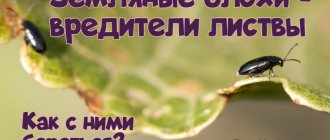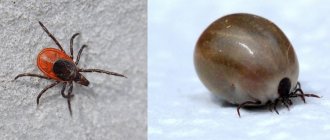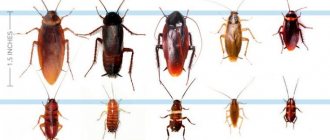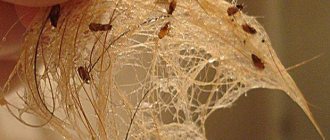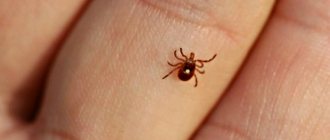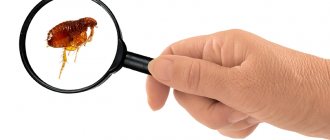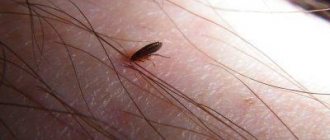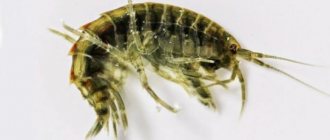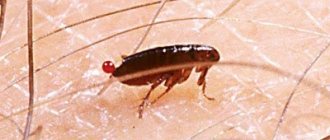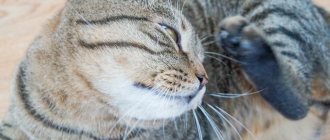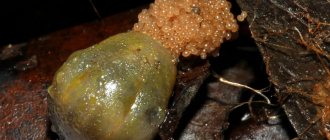According to the latest scientific data, more than 2.5 thousand species of fleas have been described to date. They live all over the world, including Antarctica. Basically, these parasites prefer temperate and subtropical climates, so in the Central region of Russia, with its relatively cold winters, only a small part of the existing species is found. All these fleas share some common features.
- Their sizes are extremely small and to humans they mainly look like small, mobile, black dots.
- They bite painfully.
- They can be carriers of various infectious and bacterial diseases, viruses and parasites.
- They move by jumping.
- They always appear en masse, although they do not live in organized colonies.
And yet, each type of flea has its own characteristics, so several sentences, of course, cannot be a sufficient description for several insects of this order at once. Below we describe in detail the types of fleas with photos and their key characteristics. This information will help you understand:
- What fleas look like at different stages of development
- How do they reproduce?
- How are they different from each other?
- What danger do they pose?
- Who gets bitten the most?
- Where are they found?
This article discusses the official scientific classification of the mentioned species.
In everyday life, people often give fleas names on their own, based on the place or host on which the fleas were found. This approach has nothing to do with the actual definition of species. Cat, dog, human, rat and sand fleas are not fleas that live only on cats, only on rats or only in sand, these are well-defined species with specific characteristics. In order to avoid confusion with Russian names, the description of each flea species will contain the Latin name of the insect in question.
human flea
- The official scientific name of the species in Latin is Pulex irritans.
- Also called house flea.
- The species is believed to have originated in South America, where its first carriers were guinea pigs and even-toed ungulates, peccaries.
- Currently the species is distributed throughout the world.
- An adult insect has dimensions ranging from 0.5 to 4 millimeters.
- The color of the insect can vary from light beige to dark brown.
- Without magnification, the human flea looks like a dark moving dot.
- It moves by jumping over a distance of up to 2 meters or even more.
- Lays eggs that look like whitish grains of rice, but are no larger than 0.5 millimeters in size.
- The larvae of the human flea are up to 0.6 millimeters long and covered with hairs.
- The entire life cycle can take from 3 months to 1.5 years, depending on environmental conditions and external circumstances.
- Causes pulicosis, can carry plague, leprosy, typhus and rat typhus, tapeworms and other helminths.
- Bites people, dogs, cats, rodents, ungulates, birds, wild animals.
Who is hiding under the name "Sand flea"
Literally translated from English, the phrase means “sand flea” and is a collective name for four completely different groups of living organisms:
- southern marine crustacean living in the sand in the surf - this is bottom plankton of the genus Emerita;
- a shrimp-like sea crustacean of the Talitridae family, which prefers rotting tufts of algae on the shore;
- small mosquitoes;
- Brazilian ground flea.
The first two “sand fleas” do not pose any danger to humans; they filter sea water for food and dream of being left alone. But they are good bait for fish, so they only dream of peace.
Interesting!
The crustacean of the Talitridae family lives along the entire Black Sea coast, but there have been no complaints about it. Black Sea sand fleas in the photo would prefer not to pose, but to bury themselves in pebbles or algae.
Small tropical mosquitoes can already pose a danger to humans, as they are carriers of many types of serious diseases.
Cat fleas
- The official scientific name of the species in Latin is Ctenocephalides felis.
- The species was first officially mentioned in 1835 in the scientific works of the German botanist and entomologist Peter Friedrich Busche.
- Nowadays, cat fleas are common throughout the world.
- An adult insect usually measures 1–2 millimeters.
- The color is red-brown; females may have beige stripes due to the visibility of eggs with offspring, which she carries inside herself for some time.
- Visually, without magnification, cat fleas look like dark moving dots.
- The flea lays 20–30 eggs per day up to 0.5 millimeters in size.
- Over the course of its entire life, one flea can lay from 2 to 8 thousand eggs, but in reality this figure rarely exceeds a hundred.
- Cat flea larvae are small caterpillars, up to 2 millimeters in length and covered in hairs.
- The pupae are motionless, brown in color, and resemble fully formed insects.
- The entire life cycle can take from 3 months to 3 years depending on environmental conditions and external circumstances.
- It can cause pulicosis, cause flea allergic dermatitis, carry rickettsiosis, brucellosis, murine typhus, Lyme disease, tapeworm.
- Bites people, domestic cats, dogs, wild predators and omnivores.
Danger to humans
When parasites live in their usual natural environment, they are exposed to bacteria, viruses, rickettsia, sporozoans and other dangerous microorganisms. When a person is bitten, the infection enters the bloodstream and thus becomes infected with dangerous diseases. A person may encounter diseases such as gangrene, tetanus, tissue necrosis, pneumonia, thrombophlebitis, lymphostasis, and tungiasis. Of course, they are also dangerous for animals, since they often attack them.
A very common disease is tungiasis, which most often affects the poor. Due to the hot climate, they do not wear shoes, so infection with parasites occurs frequently. Symptoms are manifested by severe inflammation, the skin begins to peel off, wounds appear and the person is bothered by severe pain. The inflammatory process begins already at the stage of the female’s bite; symptoms from the infection do not appear immediately. The infection in the body goes through an incubation period, which can last up to 2 weeks.
Dog fleas
- The official scientific name of the species in Latin is Ctenocephalides canis.
- The species was first mentioned in the scientific works of the English entomologist and illustrator John Curtis in 1826.
- Currently distributed throughout the world.
- An adult insect measures from 2 to 3.5 millimeters.
- The color varies in shades of brown.
- The body is flattened on the sides and covered with hairs directed along the body, which allows the flea to move freely in the animal’s fur.
- Dog fleas are difficult to notice due to their body structure; visually they look like barely noticeable dark dots.
- They lay pearl-colored eggs ranging in size from 0.1 to 0.5 millimeters.
- Over its lifetime it can lay up to 4 thousand eggs.
- The larvae are worm-shaped, from 1.5 to 5 millimeters long.
- Including all stages of transformation, dog fleas can live from 3 months to 1.5 years.
- It differs from the cat flea in the shape of its head and some features of the structure of its hind limbs.
- It can be a carrier of Marseilles fever and rickettsiosis, cause ctenocephalosis, provoke dipylidia, and be a source of trypanosomatids.
- It is more selective in food than human and cat fleas, prefers to bite dogs, and can bite cats, humans, rodents, raccoons and marsupials.
Reproduction
Unusual sexual behavior of adults depends on the special structure of their organs
reproduction. These organs are the most complex in the entire animal kingdom. The female, climbing onto the male, pulls his genitals into herself. The male reproductive system consists of one pair of testes, vas deferens, two pairs of accessory glands and the copulatory apparatus. The size of the genital organ in an inactive state is equal to a third of the length of the body. It has a beard and spines. The female reproductive system consists of paired ovaries flowing into paired oviducts. They merge into a single oviduct, which passes into the ectodermal vagina, which opens outward into the vulva.
The entire penetration process takes more than ten minutes, and the duration of sexual intercourse is almost ten hours.
Females lay eggs that are less than a millimeter long. Their development lasts about two weeks.
Rat fleas
There are two types of rat fleas: southern rat fleas and northern rat fleas.
Northern rat fleas
- The official scientific name of the species in Latin is Nosopsyllus fasciatus.
- In Russia they are simply called rat fleas.
- The birthplace of the species is considered to be Europe, from where the parasites spread throughout the world.
- The body length of an adult insect is usually from 2 to 4 millimeters.
- Color varies from brown to almost black.
- It breeds all year round, lays an average of 3–4 eggs at a time, and can lay up to 4 hundred eggs in a lifetime.
- The eggs are whitish, translucent, up to 0.6 millimeters in size.
- The larvae are up to 0.5 millimeters in length and look like mobile pale caterpillars.
- They can live from 4 months to 1.5 years.
- They live in the nest of the animal they feed on.
- They prefer to feed on the blood of rats and mice, but can also bite people.
- They are carriers of plague, rat typhus, and helminths.
Southern rat fleas
- The official scientific name of the species in Latin is Xenopsylla cheopis.
- May also be called oriental rat fleas or tropical rat fleas.
- The species was discovered and first described in 1903 during the expedition of banker Nathaniel Charles Rothschild and entomologist Heinrich Ernst Carl Jordan to Egypt.
- The species spread throughout the world thanks to rats that boarded merchant ships.
- Currently distributed throughout the world.
- In Russia it is more common in large cities.
- Color – dark brown.
- An adult specimen measures about 2.5 millimeters in length.
- The flea lays eggs ranging in size from 0.1 to 0.3 millimeters on days when it manages to get enough blood.
- Under favorable conditions, a female can lay up to 50 eggs per day, up to 600 in her lifetime.
- The dirty white larvae, up to 2 millimeters long, are extremely mobile.
- A flea can live from 4 months to 1.5 years, depending on environmental conditions.
- The southern rat flea can jump up to 50 centimeters.
- It is a carrier of bubonic plague, rat rickettsiosis, murine typhus, spotted and Marseille fever, anthrax, and helminthiases.
- It prefers to drink the blood of rodents, but can also bite humans.
The many faces of sandfly
It’s worth changing the sand flea a little to sandfly - and the solution will come closer.
In non-American English, sandfly is translated as "mosquito" (family Phlebotomidae
).
Mosquitoes should not be confused with the mosquitoes that pester us in the forest (family Culicidae
); Few people have seen mosquitoes, like fleas; they live in arid regions, for example in Central Asia (and therefore the name sandfly in relation to them is quite justified). If someone still wants to get acquainted with mosquitoes in person, then I can recommend Turkey as a resort area, where they are present, albeit only a little, on the vast sand dunes around the ruins of ancient Side. To a non-specialist, mosquitoes look like ordinary blood-sucking mosquitoes, only clearly small. However, during the day they sit in shelters, most often in rodent burrows, and fly to bite at night. That's why it wasn't mosquitoes that bit my friend on the beach on Koh Chang.
In American English sandfly means or horsefly ( Tabanidae
), or the smallest mosquitoes from the family
Ceratopogonidae
, which in Russian are called “mokretsy”. (I can’t even imagine why horseflies and biting midges are called “sand flies”: horseflies have nothing to do with sand; midges are not only not sand flies, but not even flies, but mosquitoes. For clarification, please contact the Americans.) Horseflies in Thailand there are, but even cows and horses, when they are bitten by a horsefly, notice it well and react adequately. It was clearly not them who offended my friend. But biting midges are the correct answer. These small (usually 1.0–1.5 mm) creatures (Fig. 4) have earned their own word in the Russian language for a reason.
Rice. 4.
Female
Culicoides
bites a human (photo from diptera.info)
sand flea
- The official scientific name of the species in Latin is Tunga penetrans.
- The insect is native to Western India.
- Currently distributed in Central and South America, sub-Saharan Africa, India and the Caribbean, including Mexico, Costa Rica, the Dominican Republic, Cuba, Haiti, Jamaica and Barbados.
- You can find references online that the sand flea bites vacationers in Thailand, Vietnam, Cambodia, Indonesia and other countries of Southeast Asia, however, there is no official confirmation that it is found in this region; midges of another species are mistaken for sand fleas there. They actually bite, but do not stay in human skin for weeks, as the sand flea does.
- It enters Russia with people from trips to endemic regions.
- An adult sand flea measures up to 1 millimeter, and after penetrating the skin, it swells to 1 centimeter in diameter.
- The eggs measure a maximum of 0.604 millimeters and are invisible to humans.
- The larvae are between 0.0015 millimeters and 0.0029 millimeters long and are also invisible to the human eye.
- Sand fleas live in the top layer of sand at a depth of 2 to 5 centimeters.
- They can bite livestock, dogs, cats, large wild cats, rodents, primates, armadillos, and people.
- They are the main cause of sarcopsillosis or tungiasis - a disease caused by the introduction of a parasite into the skin, its prolonged feeding on blood, reproduction and subsequent death in the tissues of the body.
- They bite mainly on the feet, toes, and in the area of the nail plates, but can also be found in other places on the body.
Treatment and prevention of bites
Even if the bite site does not cause discomfort, you should not ignore it, but this happens rarely, and usually itching cannot be avoided.
The insect bites where the soft and thinnest skin is. These can be places between the fingers, in the armpits, on the waist, and also in the popliteal cavities.
Prevention of any bite consists of the following actions, but it is better to start each of them after consulting a doctor who can recommend a suitable remedy:
- To get rid of itching, you need to treat the area with special hydrocortisone creams, for example, Yellow Balm, which has an analgesic effect, or calamine lotions.
Hydrocortisone ointment
You can use improvised means, for example: dilute baking soda with water, moisten the sponge and apply it to the inflamed area. You can also take a painkiller.
When bitten by a male, the itching that appears can be relieved by taking a hot shower or bath.
- If swelling appears, the affected area must be lubricated with gels (for example, Deta), which can relieve this symptom within a few minutes.
- To get rid of allergies, you need to immediately take appropriate antihistamine medications (special medications to prevent allergic reactions, in this case Diphenhydramine or Hydroxyzine are suitable).
- If swelling appears, it means that the insect has got under the skin. In such cases, you need to urgently consult a doctor, since you won’t be able to remove the parasite on your own; you can only harm your health.
An urgent visit to a doctor will also be required if the inflammation does not go away for more than two days, and the bite site increases.
